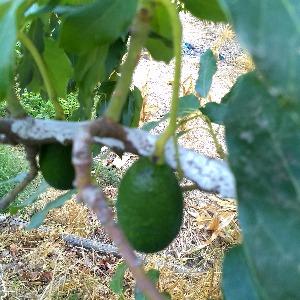
Aerobic Waste Digestion for Waste Disposal and Production of Food and Biofuels. by LA Plant Genetics
 Olawale Olaniyan Jun 24, 2017 05:27 | Hi, "Furthermore, the coupling of crop production and waste disposal in the urban setting presents a sustainable method of producing food and fuel in close proximity to the location of use." That is one of the strong points of this proposal. It will be good if you could suggest some options that could remove the barriers that you described. This will add more weight to your proposal. Olawale |
 Pia Jensen Aug 15, 2017 12:00 | This is a great idea that permaculture practitioners have experimented with and use various aspects of in their practices. An organic/biodynamic farmer in Costa Rica utilizes the method you describe and has realized greater productivity of the soil and higher crop yields. My farmer friend, Bolívar Ureña Rojas, wrote this manual (in Spanish) which describes a variety of recipes, applications and benefits of biodynamic agriculture: La Agricultura Orgánica https://drive.google.com/file/d/0B7PbzAzkdGjNclUxLW9FTVZHVjQ/view?usp=sharing Large-scale farmers could benefit from your proposal. Hope you develop your proposal further!
|
 La Plant Aug 18, 2017 10:55 | Proposal contributor I'm not aware of any biodynamic or permaculture farmers who advocate soil-less growing, much less growing in municipal solid waste. My Spanish isn't that great, but the link to Senior Rojas' manual appears to be composting recipes. My system carefully avoids the composting process because it inhibits the alternative pathway I've chosen to use instead. Totally different method of assembling materials to decompose, which allows planting of waste materials on day 1 (no need to wait for composting to occur before applying to soil and growing crops). This method does not require soil or arable land, making it great for waste disposal, while producing useful agricultural products. I can use meat, dairy, and plastic as substrates, which most composting systems can't accommodate. |
 Pia Jensen Aug 18, 2017 11:20 | I did misunderstand. Without a working example to provide description of process it's difficult to grasp what this practice looks like. You state that "This technology already exists as a fully functional method of waste processing that does not involve a composting step. The aerobic digester can be set up and planted with the first crop within a few minutes" and "biofuel crops grown using this system avoid taking agricultural land away from food crops while taking advantage of the fact that all substrates which are not acceptable for food production are acceptable for producing biofuels" - but later in the proposal you state "There really isn't any literature at present on this technology. It is an entirely new field of study" - there must be documentation of aerobic digestion which you can point us to to help us understand the proposal. I'd also like to see documentation of what plants uptake from waste that has gone through the aerobic digestion process. How can you describe the process to help us form an image of the system?
|
 La Plant Aug 22, 2017 03:04 | Proposal contributor I suggest using this process for biofuels as I don't know yet if the crops produced from unacceptable substrates would be safe to eat. I don't have the funding at present to do those studies. There is very little scientific literature on the organisms I'm using to degrade the waste. It isn't a well-funded area of research. There are maybe a dozen papers I know of on individual organisms in their natural context. I discovered what to use experimentally based on decades of observation and a few fortidous accidents. I think the best description of the system is a hydroponic/aquaponic setup with waste replacing the inert substrate and a blend of organisms added to digest the waste. Instead of adding fertilizer, the system generates it automatically as the waste is digested. Because the organisms start digesting waste immediately, with preference for waste adjacent to plant roots, the plants are able to grow. It is a very complex symbiotic relationship that I'm still characterizing. It is not something that is easy to study due to the interconnected nature of multiple variables, and this is compounded by a lack of funding. I wish there was better scientific literature, but the technology is barely a year old and we are the only ones that can get it to work. Maybe in 20 years all your questions can be answered. I work on this project part-time at best, so responses will be slow. |
 Bryan Boots Sep 3, 2017 01:34 | Great concept, and it seems like it *should* be a viable solution to use today! Hope we can see more and more systems deployed. A few minor things in your proposal that I would be interested in seeing more detail on: You also mention that the biggest thing holding these technologies back from seeing widespread use today is regulations. I'd be interested in knowing what regulations specifically are preventing these technologies from being deployed. Federal? State? Local? (of course, I'm sure it's some combination of these, but it would be good to know what some of the major regulatory agencies are that could affect these technologies' deployment). You mention that different waste streams are more suitable than others for food production using aerobic digestors, and that food waste is a natural first step. What other types of waste streams would also be good candidates for this technology? One interesting possibility to consider would be trying to first deploy these aerobic digestors with places like breweries and wineries. These facilities always have a large amount of organic waste material (spent grain, pomace, wastewater, etc.) that they have to figure out what to do with. In many cases, they have to pay extra to another company to properly dispose of this waste (because they can't just send it to the municipal landfill or dump into the municipal wastewater system), or pay extra to the municipal services provider. Additionally, many customers of breweries and wineries -- especially the smaller, boutique type ones -- tend to also be very environmentally- and socially-conscious, and might see a company employing these aerobic digestors in an even more positive light. These wineries or breweries could use the recycled waste either for their own barley, hops, or grape production, or contract with neighboring farmers that are growing food crops. If you follow this example, I think there would be other food production and processing companies that could see a benefit to their own bottom line from using these technologies. Is there any intellectual property (patent) protection on this technology, or any possibility of obtaining such? I think one of your biggest next steps needs to be putting hard numbers to this technology. For a system that can process x tons of waste per time period, how much money needs to be spent up front, and how much money needs to be spent on an ongoing basis? Additionally, if you could run some rough numbers on how much food could be produced in a given time period by the system and at what cost, it would be helpful to people considering deploying such technologies. Having more concrete figures for these two things will be critical in seeing this technology deployed. |
 Sergio Pena Sep 4, 2017 09:32 | This is an interesting proposal. Would be interesting to hace referente to articles por research on the subject even if the number of articles is not big or enough. If you could publish an article con the subject in a peer review journal would be of interés. Justo a descriptiva paper. What might be of interestelar are policy and legal implications un diminishing causes of climate change. Considering a number of houses of familias how many of them would be sufficient to provoke impact. Best. Sergio |